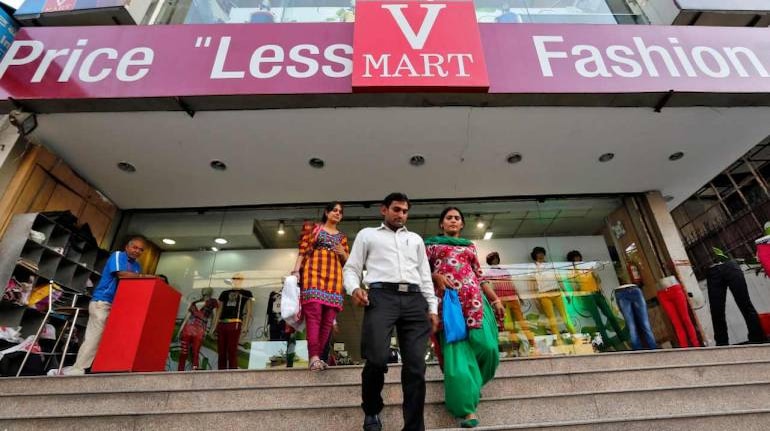



Shares of V-Mart Retail rose 15 percent to a 52-week high on the National Stock Exchange on November 11, although the value fashion retailer’s stock gave up all those gains by the close.
While investors have reason to be excited about the better-than-expected recovery seen during the September quarter (Q2 of FY22), the road ahead isn’t smooth.
There are cost pressures. Yarn prices have increased sharply. V-Mart is increasing prices to cope with this. Even so, investors would have to keep a close eye on the resultant impact on demand and eventually, sales.
The anticipated goods and services tax rate increase from January is another concern.
“The GST hike proposed from the current 5 percent to 12 percent from January 1, 2022, on apparels and footwear in the sub-1,000 rupee range could impact margins and future sales as 88 percent of the company’s inventory and sales fall in this bracket,” said Lalit Agarwal, managing director of V-Mart. “The significant increase in yarn prices would further pose a bit of challenge in keeping MRPs (maximum retail prices) to our usual competitive levels.”
It’s not as though valuations of the V-Mart stock are cheap. So far in 2021, the stock has appreciated by about 66 percent, suggesting that investors are capturing a good portion of future growth prospects into the price. It is likely that meaningful upsides will be capped.
“With valuations seemingly running ahead of actual delivery, we would suggest waiting for corrections for a fresh entry, and hence revise our rating to ADD from Buy,” analysts from Yes Securities said in a report on November 10.
The brokerage firm said V-Mart will clock positive same-store sales growth in the December quarter (Q3 of FY22), given that the festive season is already witnessing flattish same-store sales growth with pre‐winter sales receiving strong responses. Same-store sales growth is a measure of comparable sales over a period of time.
V-Mart’s revenue increased almost 93 percent year-on-year to Rs 338 crore in the second quarter of FY22. This growth was on a favourable base considering that revenue had declined a year earlier.
The company saw a sustained recovery after the second Covid wave-related disruptions even as the early part of the quarter was impacted by restrictions in parts of the country. In Q2, apparels, non-apparels and kirana products accounted for 79.4 percent, 11.2 percent and 9.4 percent, respectively, of the sales mix.
V-Mart’s reported revenue is 7.6 percent higher than in Q2 of FY20, which was a pre-pandemic quarter. On a comparable basis, excluding the addition of 74 Unlimited stores, the recovery from pre-covid levels stood at 100 percent.
Overall, V-Mart’s Q2 net loss narrowed year-on-year and sequentially to Rs 14 crore. The company has 368 stores, including 74 Unlimited stores acquired and integrated with effect from September 1.
“Recent acquisition of the Unlimited Value Retail chain and aggressive store additions in its core markets should drive steady growth (FY23E PAT revised upward to 25 percent on incorporating Unlimited stores in our estimates), which can be well supported by a lean balance sheet, backed by a recent QIP,” said analysts from Motilal Oswal Financial Services. QIP is qualified institutional placement and PAT is profit after tax.
“We factor in 21 percent/34 percent revenue/PAT CAGR over FY20-24E, but a near-term improvement in Unlimited stores will be key,” the brokerage added. CAGR is compound annual growth rate.
“While it will take considerable time to transform Unlimited stores’ operating metrics to match V‐Mart’s, progress on this front should be a key monitorable in coming quarters,” the analysts from Yes Securities said.
Discover the latest Business News, Sensex, and Nifty updates. Obtain Personal Finance insights, tax queries, and expert opinions on Moneycontrol or download the Moneycontrol App to stay updated!
Find the best of Al News in one place, specially curated for you every weekend.
Stay on top of the latest tech trends and biggest startup news.